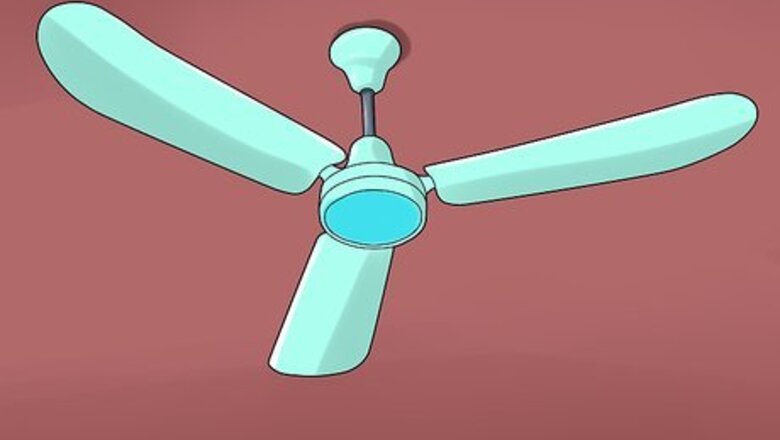
views
- Turn off the power and place your ladder under the ceiling fan. Then, remove the metal canopy that covers the mounting bracket by loosening the screws on either side.
- Retest that there is no power to the fan using a voltage tester. Then, remove the wire nuts by turning them counterclockwise with a screwdriver.
- Carefully pull the fan from the mounting bracket and lower it to the ground. Finish by unscrewing the mounting bracket from the ceiling.
Removing a Ball-in-Socket Style Ceiling Fan
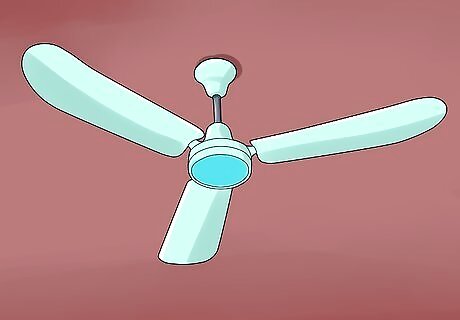
Assess whether you have a ball-in-socket style ceiling fan, also known as a down-rod mounted ceiling fan. These type of fans are distinctive in that the body of the fan hangs a bit away from the ceiling on a pole. The pole connects at the ceiling at a canopy, which is just a small metal enclosure that covers the mounting bracket and wires for the fan. This type of ceiling fan can usually be easily removed in a few steps.

Always turn off the power at the electrical panel before working on anything electrical. An easy way to make sure you have turned off the power is by keeping the fan on when you go to switch the breaker. If you have successfully turned off the correct breaker, the fan should be coming to a stop when you return.
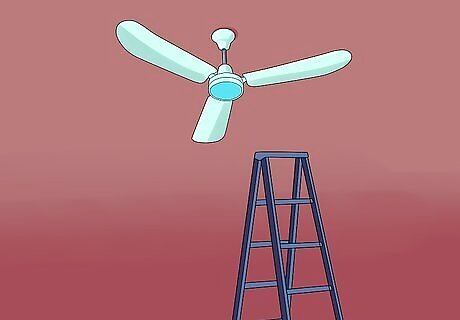
Place your ladder under the ceiling fan. You may want to place it a little to the side of the fan so you can easily reach around the paddles to the canopy at the ceiling.
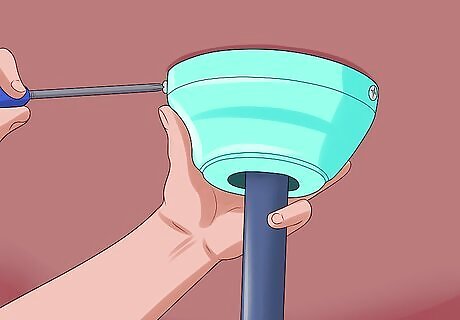
Remove the metal canopy that covers the mounting bracket by loosening the screws on either side. You may need to use a very short screwdriver to get between the housing at the ceiling and the main body of the ceiling fan. Once the canopy is unscrewed, simply lower it down so it rests on top of the fan body. Now you should be able to see how the ball at the top of the fan pole slips easily in and out of the bracket. You should also be able to see the electrical connections between the fan and the wires in the ceiling. If you cannot get into the space between the housing and the fan body, you may want to follow method two below, as it will tell you how to take more parts off the fan apart in order to remove it.

Retest that you have no power coming to the fan. This is most easily done with a non-contact voltage tester, which tests for magnetic fields around wires quickly and easily.
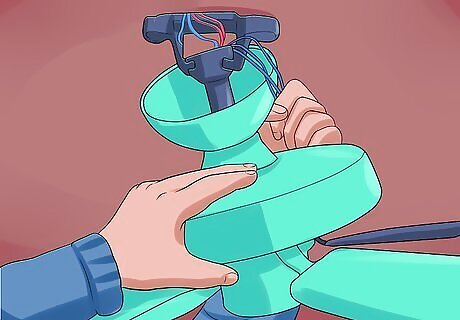
Remove the wire nuts that are connecting the wires from the fan and the wires from the ceiling together. You may need to pull all the wires out a bit to access the wire nuts but once you have them in hand, turn them counterclockwise and they should unscrew. Once you have detached the fan wires from the wires coming from the ceiling, be sure to put the wire nuts back onto the wires coming from the ceiling. This way, if you need to turn the power back on before you install a new fixture, your wires will be safely capped off.
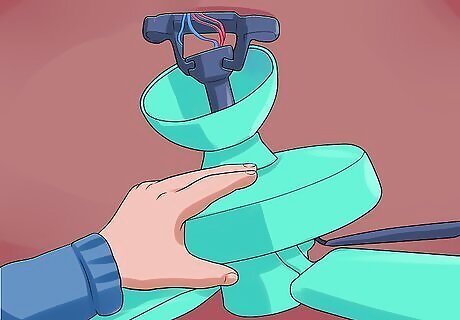
Grab a hold of the whole light fixture and slide the ball at the top of the fan pole out of the mounting bracket. This connection might vary slightly, but should slip out relatively easily no matter the exact style. Remember to keep a good hold of the fan, as once its out of the bracket you will need to support its whole weight.
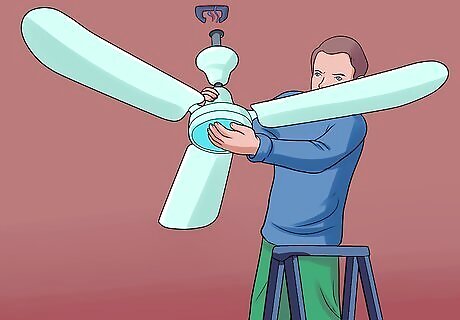
Lower the fan to the ground. It may be helpful to rest it on the top of your ladder momentarily, so that you can readjust your grip and get down your ladder with the fan safely. You now have removed your ceiling fan but you are not quite done!
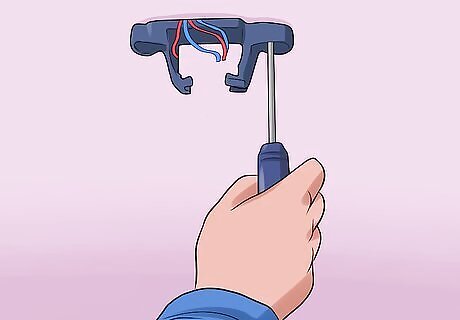
Detach the mounting bracket from the ceiling. It should be attached with two screws the electrical box in the ceiling. It is a good idea to put the screws back in the electrical box once the bracket is removed so that they are there for the next fixture you want to attach. Even if you are going to put up a new ceiling fan, you should still remove the mounting bracket. Every ceiling fan comes with its own mounting bracket that is made specifically for that model.
Removing a Flush Mounted Ceiling Fan
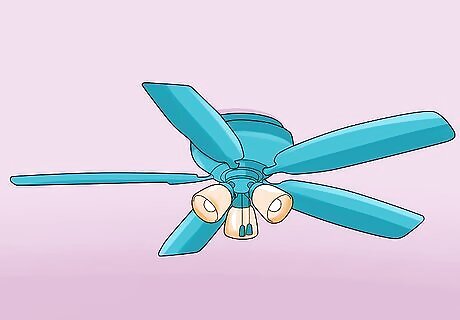
Assess whether you have a flush mounted ceiling fan, also known as a bracket mounted ceiling fan. This type of ceiling fan is obviously flush mounted, meaning that the motor of the fan sits right up at the ceiling. These ceiling fans require a bit more disassembly to remove, as the fan itself needs to be taken apart to get to the attachment bracket. However, they are good fans to have in rooms with low ceilings, as they do not hang down as far as ball-in-socket type ceiling fans.
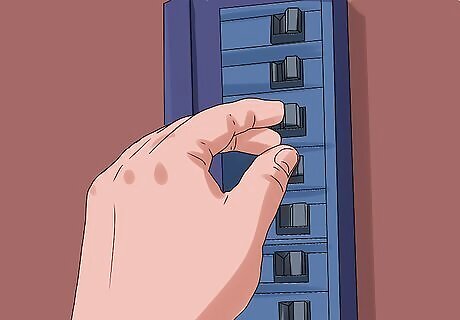
Always turn off the power at the electrical panel before working on anything electrical. An easy way to make sure you have turned off the power is by keeping the fan on when you go to switch the breaker. If you have successfully turned off the right breaker, the fan should be coming to a stop when you return.
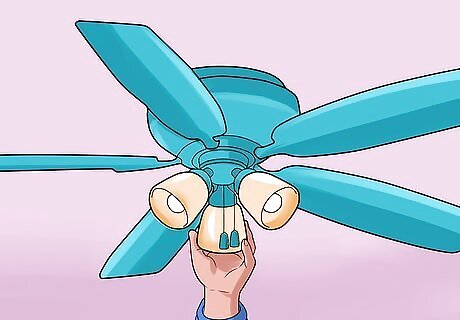
Remove all light bulbs and any bulb covers from the fan, if your ceiling fan has a light kit attached to it. The light kit is simply the portion of the fan that is the light. On most ceiling fans with lights, the light kit is a separate section of the fan that can be removed separately. On many styles of ceiling fans the lightbulbs are simply accessible by climbing up a ladder and unscrewing them but some models require you to take off a cover that encloses the bulb. Be gentle when removing the lightbulbs. If they happen to break, you should be cautious when removing a broken lightbulb from the socket.
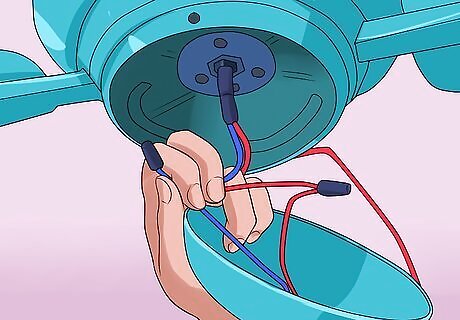
Remove the light kit, if your ceiling fan has one. While some models will allow you to take the fan body off the ceiling without removing the light kit, most flush mounted ceiling fans require that it is removed, so that you can get to the screws that attach the whole fan to the ceiling. This step will require unscrewing the screws that hold the light kit to the fan body. Inside, you will most likely have to disconnect the wires that connect the light kit to the fan. These should simply be connected with wire nuts, which you turn counterclockwise to unscrew. It is a really good idea to retest that you have no power coming to the fan once you have opened up the light kit. This is most easily done with a non-contact voltage tester, which tests for magnetic fields around wires quickly and easily.
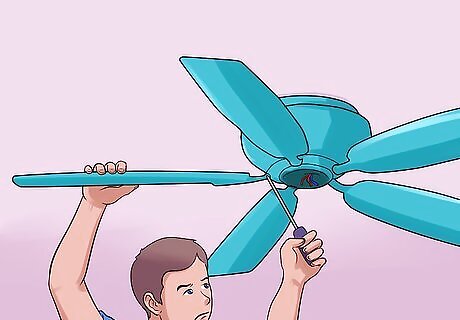
Remove the fan blades with a screwdriver. Ceiling fan blades are connected to the body of the fan with metal brackets that screw into the fan body, basically the housing for the fan's motor, and into the fan paddles themselves. It's easiest to keep the fan blade brackets and the fan blades attached and just unscrew the screws that attach the brackets to the fan body. This way, you aren't removing twice as many screws while up on your ladder. If you plan on re-using the fan, be sure to keep all the parts. Placing all the parts in a marked bag or envelope is a good idea.

Loosen the screws that hold the fan body to the bracket on the ceiling. Be sure to have a good grip on the fan body while doing this. On most modern ceiling fan models the body is attached to the bracket with a screw on one side and a hinge on the other side. This makes it so that when you unscrew the screw, the body of the fan can hang off the hinge while you disconnect the wiring. Once the screw is unscrewed, simply allow the body of the fan to hang from the hinge on one side. Otherwise you would have to hold the whole fan in one hand and disconnect the wires with the other.
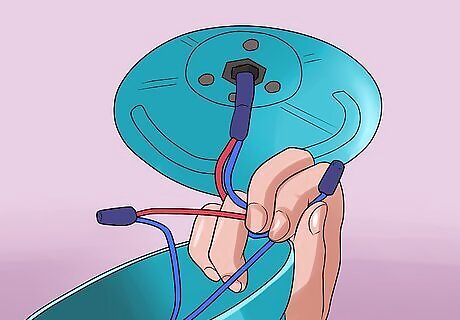
Remove the wire nuts that are connecting the wires from the fan and the wires from the ceiling together. You may need to pull all the wires out a bit to access the wire nuts but once you have them in hand, turn them counterclockwise and they should unscrew. Once you have detached the fan wires from the wires coming from the ceiling, be sure to put the wire nuts back onto the wires coming from the ceiling. This way, if you need to turn the power back on before you install a new fixture, your wires will be safely capped off.
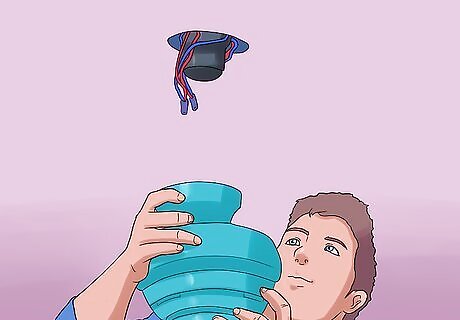
Remove the fan body from the hinge on the mounting bracket. It should simply have a piece that slips out of the bracket. Often, there will be a safety chain coming from the fan attached to a joist in the ceiling. If so, unhook the safety chain to free the fan.
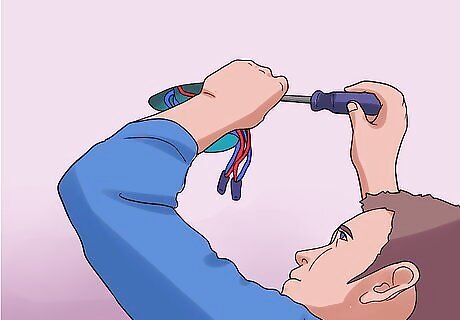
Detach the mounting bracket from the ceiling. It should be attached with two screws the electrical box in the ceiling. It is a good idea to put the screws back in the electrical box once the bracket is removed so that they are there for the next fixture you want to attach. Even if you are going to put up a new ceiling fan, you should still remove the mounting bracket. Every ceiling fan comes with its own mounting bracket that is made specifically for that model.


















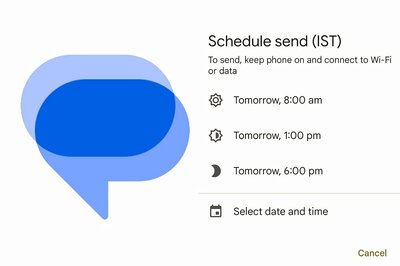

Comments
0 comment